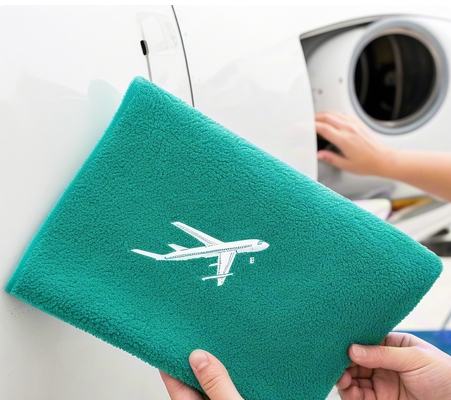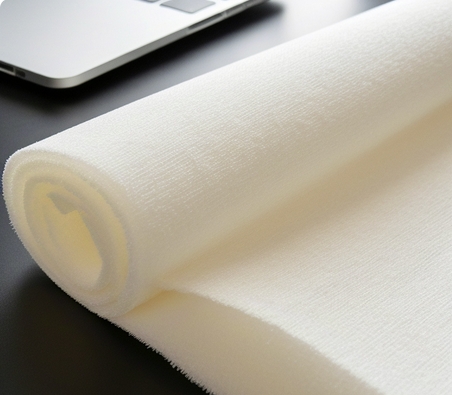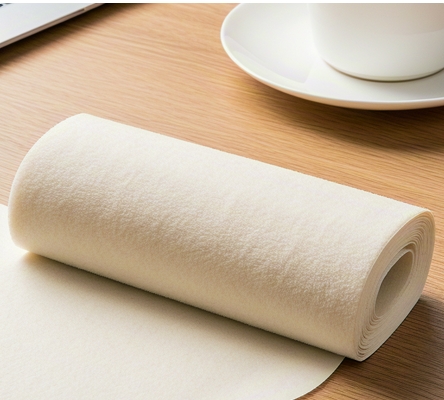Language

Clean Room Dust-Free Wipe Cloth Selection Guide: A Decision Framework for Professional Procurement Personnel
In precision industries such as microelectronics manufacturing and biopharmaceuticals, the choice of clean room dust-free wipes directly affects the cleanliness level and product qualification rate of the production environment. As a key link in procurement decision-making, we recommend that wipes be screened through a systematic evaluation process, especially when dealing with a level 3-5 clean room environment defined by the ISO 14644-1 standard, which requires careful decision-making.
Scientific evaluation system for core performance indicators According to the ASTM D6654 standard, professional purchasing personnel should establish a six-dimensional evaluation model: 1. Particle release: Use a laser particle counter to detect the number of particles ≥0.5μm released per square meter of wipe cloth 2. Fiber shedding rate: Test the fiber residue per unit area through the HEPA filtration system 3. Chemical compatibility: Focus on detecting the dissolution of NVR (nonvolatile residue) in deionized water and isopropanol 4. Ion precipitation degree: Use ion chromatography to measure the migration of conductive substances such as sodium chloride 5. Mechanical tolerance: Verify the structural stability of material through 500 reciprocating friction tests 6. Liquid absorption performance: Record the liquid absorption and diffusion rate per unit time
A typical case decision tree analysis A semiconductor wafer factory once suffered a direct loss of US$2.3 million due to the use of non-standard wipes. Postdoc analysis showed that the problem stems from the fiber shedding caused by the failure of the edge sealing process of the wipe cloth. This confirms that different choice strategies should be adopted for different cleanliness levels:
ISO 3-4 grade environment (≥0.1μm particles per cubic meter ≤1000): It is recommended to give priority to laser edge-sealed polyester wipes, and their fiber shedding rate can be controlled below 0.8mg/m². For example, a well-known brand KS600 series has been tested and showed that after 50 wipes under 10kPa pressure, only 1,200 0.3μm particles per square meter were released.
ISO Level 4-5 environment (≥0.5μm particles per cubic meter ≤29,300): The dust-free cloth with wide edge sealing can be used as an economical option, but it is necessary to ensure that its NVR value is less than 3μg/cm². Comparative tests by a medical device manufacturer show that such products can improve cleaning efficiency by 40%, while reducing the risk of cross-contamination by 67%.
The depth analysis of key process parameters differences in edge sealing technology directly affect the performance of the wipe cloth. The laser edge sealing melts and solidifies the fiber cross-section through instantaneous high temperature to form a sealing layer less than 0.1mm; while the wide edge sealing treatment uses hot melt technology to completely wrap the fiber ends to form a 1-2mm protective belt. In extreme cleaning scenarios, the former reduces fiber shedding by 93%.
The latest advances in materials science show that plasma-treated ultrafine denier fibers (monofilament diameter ≤0.8dtex) combined with a two-component spun bonding process can increase the liquid retention capacity of the wiper cloth to 2.3 times that of traditional materials.
In the field of precision manufacturing, the choice of clean room dust-free wipes directly affects the pollution control efficiency. According to the ISO 14644-1 international standard, different cleanliness levels correspond to differentiated material selection solutions:
For ISO Class 5-7 medium-clean environment, a hydros pinned polyester/cellulose composite wipe cloth is used. Its unique three-dimensional mesh structure can effectively capture more than 5μm of particles. Taking the actual data of a wafer fab as an example, in the ISO level 5 environmental test, only 12 0.5μm particles per square meter of wipe area are released, which fully meets the semiconductor manufacturing standards.
High-grade clean room (ISO 7+) solution polyester/cellulose composite wipe cloth has become the preferred solution for biopharmaceutical companies with a fiber gap of 0.3μm. Comparative tests by a vaccine manufacturer showed that the material reduces the fiber shedding rate by 67% compared with traditional cotton wipes. It is worth noting that although the cotton wipes have a heat resistance of 180℃, their natural fiber structure is prone to micro-lint, and it is recommended to be limited to equipment maintenance.
Economic analysis of procurement decisions According to the American Cleaning Association's 2023 annual report, 0.1% of wipe selection errors may cause a production line yield rate to drop by 1.2-2.5 percentage points. Taking the 12-inch wafer production line as an example, the annual loss of a single production line can reach US$2.8 million. This requires the procurement department to establish a multidimensional evaluation system, focusing on: material cleanliness certification (ISO level 4 or above), chemical reagent compatibility (need to pass ASTM E595 test), electrostatic dissipation value (surface resistance range 10^6-10^9Ω).
It is recommended to implement a hierarchical management system 1. Lithography area: A double-layer braided polyester microfiber wipe cloth 2. Packaging area: A pre-wet treatment electrostatic dissipation wipe cloth 3. Equipment maintenance: Reserve a blended material wipe cloth resistant to organic solvents By establishing such a hierarchical management system, a monitor panel factory successfully reduced the complaint rate of product pollution by 43%, and at the same time, the annual cost of consumables is saved by US$180,000.
Tags:
RELATED RESOURCES

Microfiber Clean room Wipes Application Guide: Biopharmaceutical/Fab Cleaning Solutions.
As the core consumable in the field of precision cleaning, the microfiber dust-free cloth is precisely woven b......
More

How Aircraft Wipes Achieve Zero-Contamination Aircraft Engine Cleaning
Wipe star aviation-grade cleaning consumables are manufactured using innovative hydros pinning process, and th......
More

7 Questions on Selecting Ultrafine Dust-Free Wipes: Comparative Analysis of Ultrafine Fiber Cleaning
Comparative analysis of ultra-fine dust-free cloth and ultra-fine dust-free cloth: professional selection guid......
More

The difference between dust-free paper and wiping paper is revealed. 15 years of experience in the f
In the field of industrial cleaning consumables, dust-free paper and wipe paper are two core products often ca......
More
Related Products
Room 101, Building 1, Angeer Factory, No.4, Hetian Road, Shatian Community, Kengzi Street, Pingshan District, Shenzhen, Guangdong, P.R. China 518122
info@wipestar.com
+86-755-89616775
+86-755-89616773
Related Products
RELATED RESOURCES

Microfiber Clean room Wipes Application Guide: Biopharmaceutical/Fab Cleaning Solutions.
As the core consumable in the field of precision cleaning, the microfiber dust-free cloth is precisely woven b.........
More

How Aircraft Wipes Achieve Zero-Contamination Aircraft Engine Cleaning
Wipe star aviation-grade cleaning consumables are manufactured using innovative hydros pinning process, and th.........
More
WIPESTAR
微信官方公众号